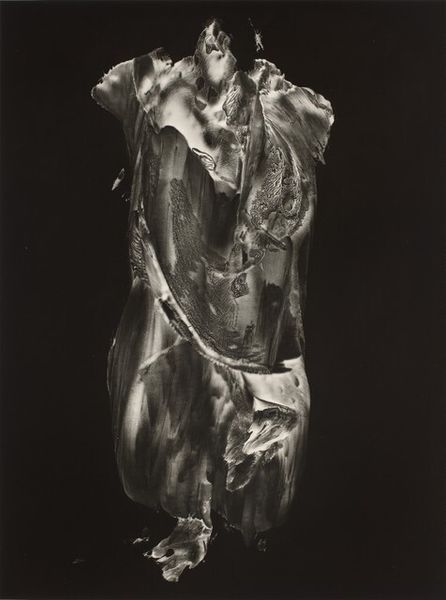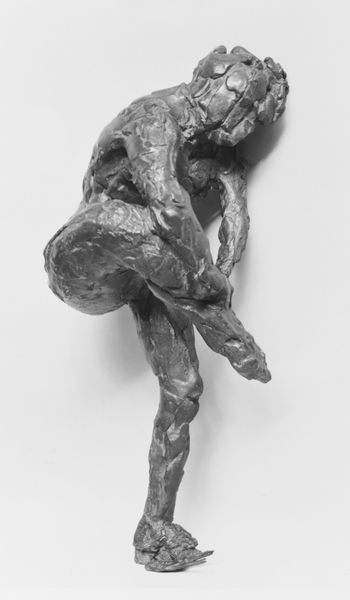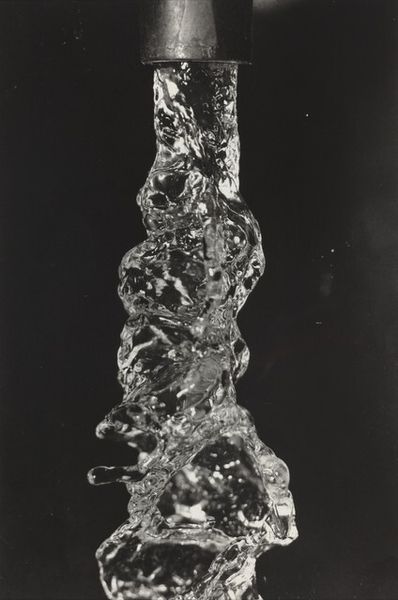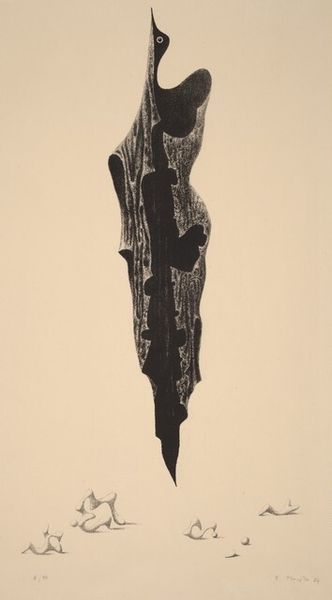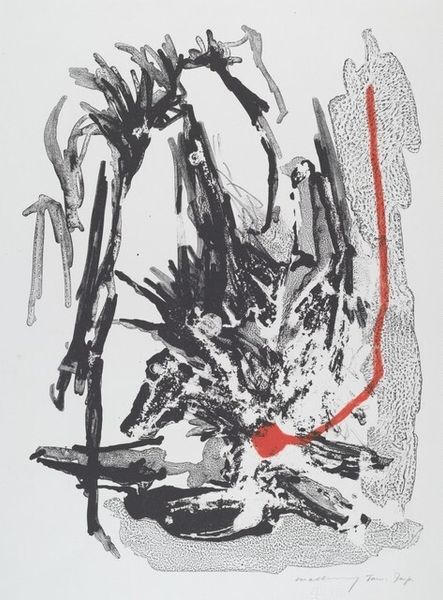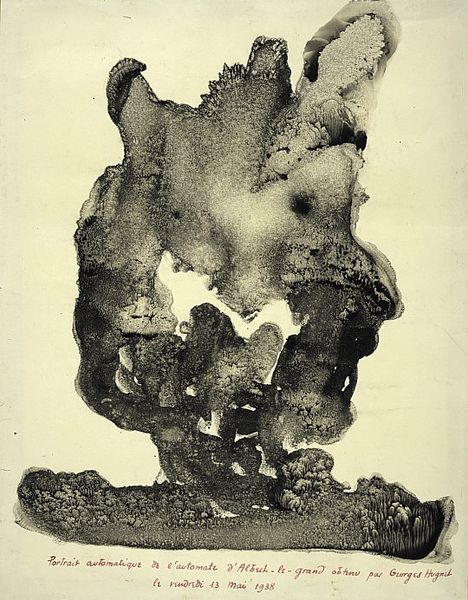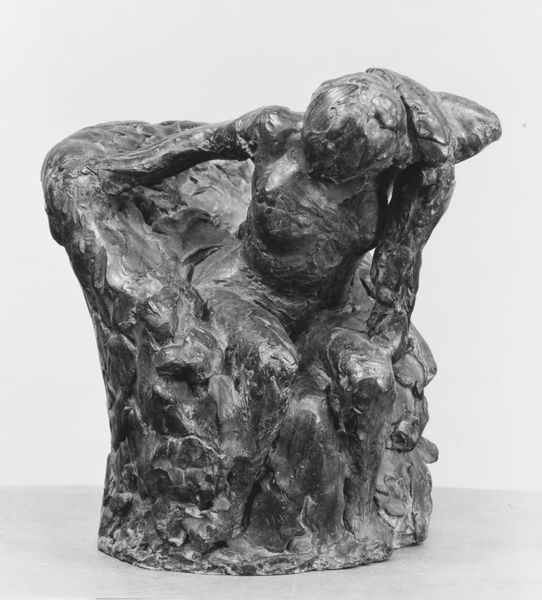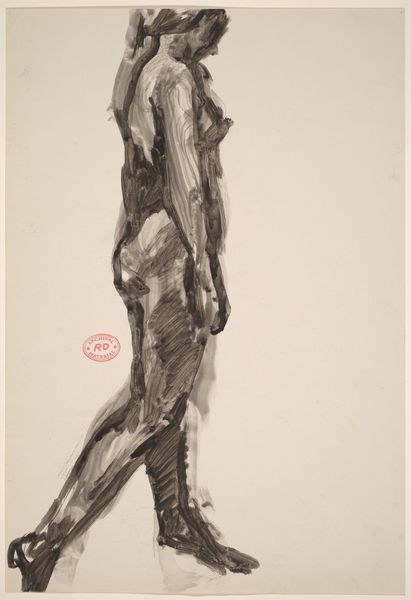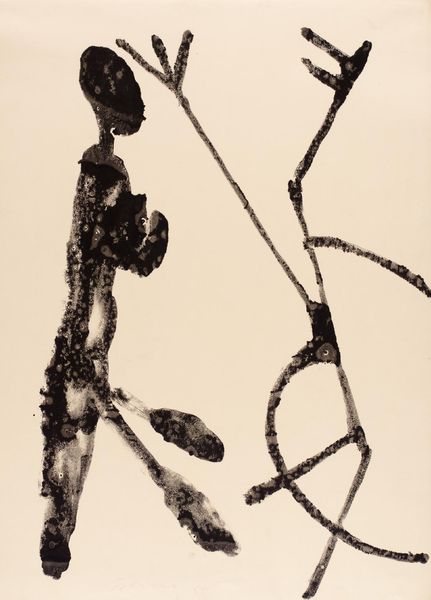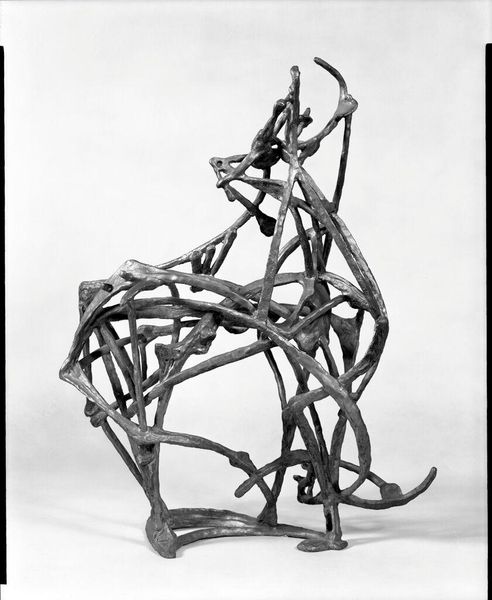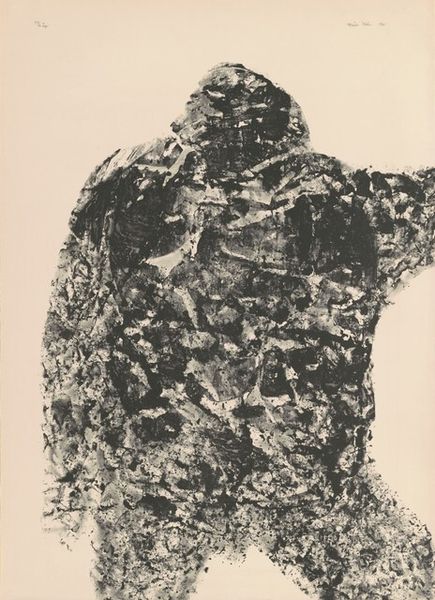
Dimensions: image: 49.21 x 39.53 cm (19 3/8 x 15 9/16 in.) sheet: 50.48 x 40.48 cm (19 7/8 x 15 15/16 in.)
Copyright: National Gallery of Art: CC0 1.0
Curator: Looking at this powerful abstraction by Frederick Sommer, created in 1957 using acrylic paint on cellophane, I am struck by the raw simplicity of its monochrome palette and its unexpected materiality. Editor: Yes, it’s compelling. My first impression is almost visceral—it feels like a stark, perhaps desolate landscape under the shroud of night. There's a tension between fragility and brute force suggested by the texture. Curator: Indeed. Sommer's unusual choice of cellophane introduces a translucent plane that affects our understanding of painting, bringing forward the role of materiality. Notice how the gestural marks retain a kind of sculptural presence despite being mere pigment? Editor: Absolutely. Cellophane, traditionally a transparent wrapping, now transforms into a substrate. This resonates with the artistic climate of the time. Post-Impressionism was breaking away from representational forms, exploring subjective expression. And cellophane wasn’t an avant-garde art supply so its inclusion serves a democratic gesture to common materials. Curator: I agree. The composition too deserves closer examination. The linear strokes coalesce into forms that imply volume. It engages in a play between two-dimensionality and three-dimensionality that characterizes abstract matter paintings. Editor: Placing it within the broader social and historical moment, post-war America saw an artistic surge in abstract expressionism which gave way to color field paintings in later years. Sommer was slightly outside of that stream. This artwork reminds me of anxieties about materialism prevalent during that period. Sommer utilizes common industrial material, giving form to anxieties over modern development. Curator: I think that's insightful, and helps unpack the layered meaning present here. It challenges us to re-evaluate how painting can utilize commonplace objects for more formal investigation. Editor: Seeing it today, Sommer’s "Untitled (Paint on Cellophane)" from 1957 presents a unique window into that particular artistic exploration of the era. Thank you for providing formal interpretations about the work and material qualities. Curator: And thank you for illuminating the broader historical context surrounding this piece. It highlights how artistic production is so thoroughly intertwined with prevailing attitudes and materials of that period.
Comments
No comments
Be the first to comment and join the conversation on the ultimate creative platform.
